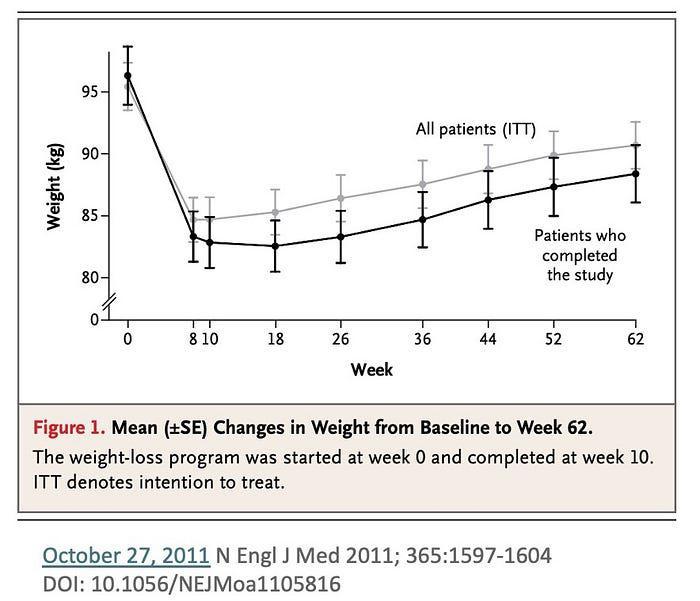In Part 1 of the adipose thermostat, we discussed how adipose tissue is highly regulated like a thermostat, not left to how much you eat in the future. We always considered the steady-state mechanism according to the energy balance equation.
Adipose = Calories in Calories
The steady state of Body Set Weight (BSW) means that if there is weight loss, the body tries to regain weight. In Part 2 of the adipose thermostat, we discussed only one mechanism. Consuming fewer calories simply made the body burn fewer calories (mainly decreased energy expenditure - heat production, etc.) resulting in much less weight loss than expected.
In Part 3, we will discuss how BSW affects starvation. As weight decreases, the body increases hunger, making you eat more and lose weight.
This understanding of BSW is important for weight loss. Successful weight loss depends on adipose thermostat regulation rather than calorie adjustment.
You lose weight and get hungry
We have known for decades that weight loss makes you hungry. It is not dock psychology but the result of measurable and identifiable changes in body hormones. The best example is a 2011 study published in the New England Journal of Medicine called "Long-Term Persistence of Hormonal Adaptations to Weight Loss."

Patients reduced their weight by following a 500-calorie/day diet consisting of 2 shakes and some low-starch vegetables for 8 weeks as a goal to lose 10% of their weight. After 10 weeks, people who lost weight were monitored for a year while measuring the hormonal changes caused by weight loss.
What happened? As predicted by weight loss, hormones that increase hunger increased as weight decreased. This hunger would have increased...
